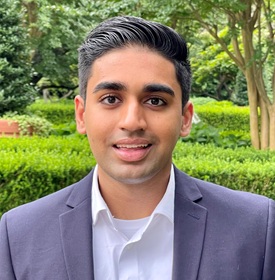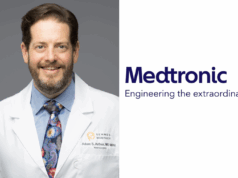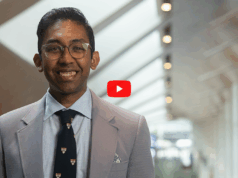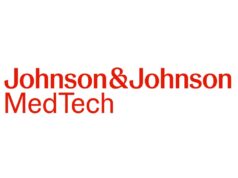
In a NeuroNews guest article, Avi Gajjar (Albany, USA) discusses the medical community’s understanding—or relative lack thereof—of moyamoya disease.
Moyamoya disease is an occlusive, progressive vasculopathy of the terminal internal carotid arteries and their proximal branches. As stenosis progresses, a network of fragile collateral vessels develops, the so-called ‘moyamoya’ vessels, placing patients at high risk for ischaemic stroke, haemorrhage, seizures, and cognitive decline.1 Although most commonly seen in East Asian populations, particularly Japan and Korea, it’s increasingly recognised worldwide.2 In children, the disease tends to present with ischaemia; in adults, haemorrhage is more common. In either case, the consequences are serious, and delays in diagnosis are not uncommon.3
Workup typically begins with magnetic resonance angiography or computed tomography angiography—but digital subtraction angiography remains the gold standard. Early diagnosis matters, as it can reduce cumulative risk. However, many patients, especially those outside of major centres, are only diagnosed after a major event.
Surgical revascularisation is the mainstay of treatment. Both direct and indirect approaches have shown benefit in reducing recurrent events and preserving neurological function.4 The evidence here is solid: retrospective studies and institutional series consistently show better outcomes in surgically treated patients.4,5 That said, the field still faces open questions around timing, durability and which patients, especially asymptomatic or adult-onset cases, truly benefit.6,7 Medical management remains limited, generally consisting of antiplatelet therapy and risk factor control, and offers far less protection than surgery.
What’s clear is that there’s still a lot we don’t know. The aetiology of moyamoya isn’t fully understood. Genetic associations like RNF213 have been identified but haven’t yet led to therapeutic targets.8 Even with surgical options available, these procedures are rarely done outside of high-volume centres, and most published outcomes come from select populations.9 That leaves a large group of patients who may be misdiagnosed, undertreated, or both.
One area that deserves more attention is how we understand the patient experience. Most traditional ways of measuring outcomes, such as clinic surveys or patient-reported outcome measures, often overlook certain aspects, especially in rare diseases like moyamoya.10,11 Studies have analysed over 1,000 publicly available social media posts from Instagram and TikTok tagged with ‘#moyamoya’ or ‘#moyamoyawarrior’.12 Most posts were authored by patients themselves (64%) and the majority were women (75%). Across platforms, the most common themes were recovery, survival and spreading positivity. Female patients more often posted about pain and appearance, while male patients were more likely to mention religion and survival. Interestingly, patients—and not their family or friends—were the ones most likely to write about quality of life and resiliency.12
These kinds of unfiltered data aren’t a substitute for clinical outcomes, but they give us a valuable look into what matters to patients. It can shape how we counsel them, help set expectations, and guide postoperative care. For a rare disease like moyamoya, where the path to diagnosis is often long and isolating, these patient voices offer insight we don’t get from chart reviews or follow-up visits.
Moyamoya remains a complex condition with major gaps in diagnosis, treatment access, and long-term data. Surgery remains the best option, but too many patients are diagnosed too late or not at all.13 For the neurovascular community, the next step is clear: there is a need for better diagnostic pathways, broader awareness outside of referral centres, and more work capturing what patients actually experience.
References:
- Bang O Y, Fujimura M, Kim S K. The pathophysiology of moyamoya disease: an update. J Stroke. 2016; 18(1): 12–20.
- Kim J S. Moyamoya disease: epidemiology, clinical features, and diagnosis. J Stroke. 2016; 18(1): 2.
- Weinberg D G, Rahme R J, Aoun S G et al. Moyamoya disease: functional and neurocognitive outcomes in the pediatric and adult populations. Neurosurgical Focus. 2011; 30(6): E21.
- Nguyen V N, Motiwala M, Elarjani T et al. Direct, indirect, and combined extracranial-to-intracranial bypass for adult moyamoya disease: an updated systematic review and meta-analysis. Stroke. 2022; 53(12): 3572–82.
- Jeon J P, Kim J E, Cho W S et al. Meta-analysis of the surgical outcomes of symptomatic moyamoya disease in adults. J Neurosurg. 2018; 128(3): 793–9.
- Lim Y C, Lee E, Song J. Outcomes of bypass surgery in adult moyamoya disease by onset type. JAMA Netw Open. 2024; 7(6): e2415102.
- Lai P M R, Gomez-Paz S, Patel N J et al. Asymptomatic moyamoya disease in a North American adult cohort. World Neurosurg. 2022; 161: e146–e153.
- Kamada F, Aoki Y, Narisawa A et al. A genome-wide association study identifies RNF213 as the first moyamoya disease gene. J Hum Genet. 2011; 56(1): 34–40.
- Unda S R, Antoniazzi A M, Miller R et al. Moyamoya disease and syndrome: a national inpatient study of ischemic stroke predictors. J Stroke Cerebrovasc Dis. 2021; 30(9): 105965.
- Ramesh R, Haddad A F, Letchuman V et al. Patient-reported outcome measures in cerebrovascular neurosurgery. J Neurosurg. 2023; 140(5): 1357–68.
- Gajjar A A, Salem M M, Hou N Y et al. What matters most to cerebral aneurysms patients: a digital analysis of 1,127 social media posts. Interv Neuroradiol. Published online: 12 April 2023. DOI: 10.1177/15910199231167914.
- Hou N Y, Gajjar A A, Hou E et al. Moyamoya disease: understanding patient experiences through thematic analysis of Instagram, TikTok, and Twitter posts. J Stroke Cerebrovasc Dis. 2025; 34(6): 108293.
- Graf J, Schwitalla J C, Albrecht P et al. Misdiagnoses and delay of diagnoses in moyamoya angiopathy—a large Caucasian case series. J Neurol. 2019; 266(5): 1153–9.
Avi Gajjar is a medical student at Albany Medical College (Albany, USA) with a strong clinical and academic interest in endovascular neurosurgery.
DISCLOSURES: The author disclosed that he is the founder of non-profit company NeurosurGen, and has received financial support from the Neurosurgery Research and Education Foundation (NREF) and the American Association of Neurological Surgeons (AANS).










